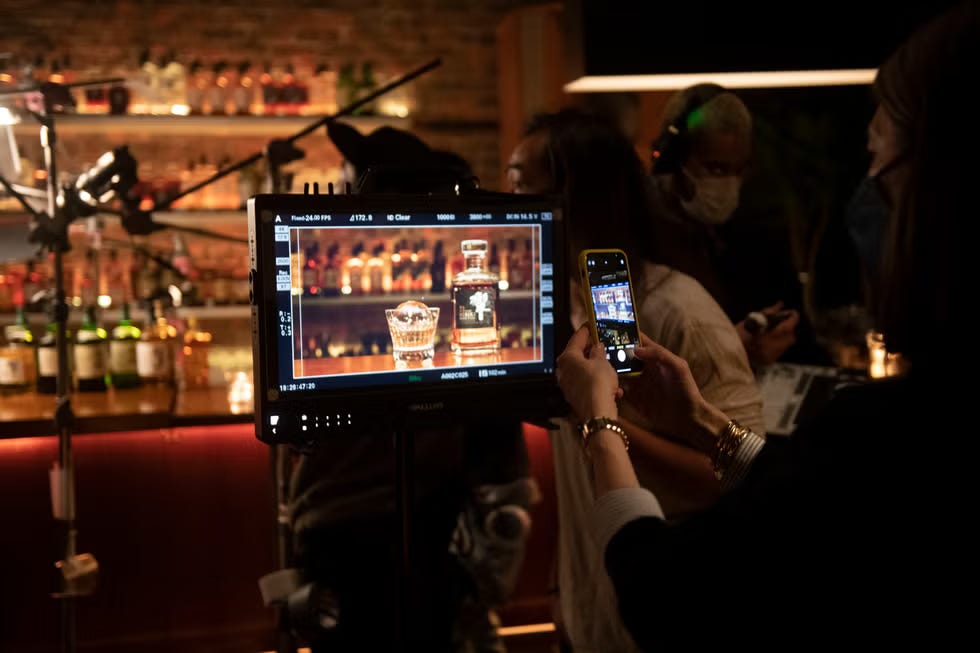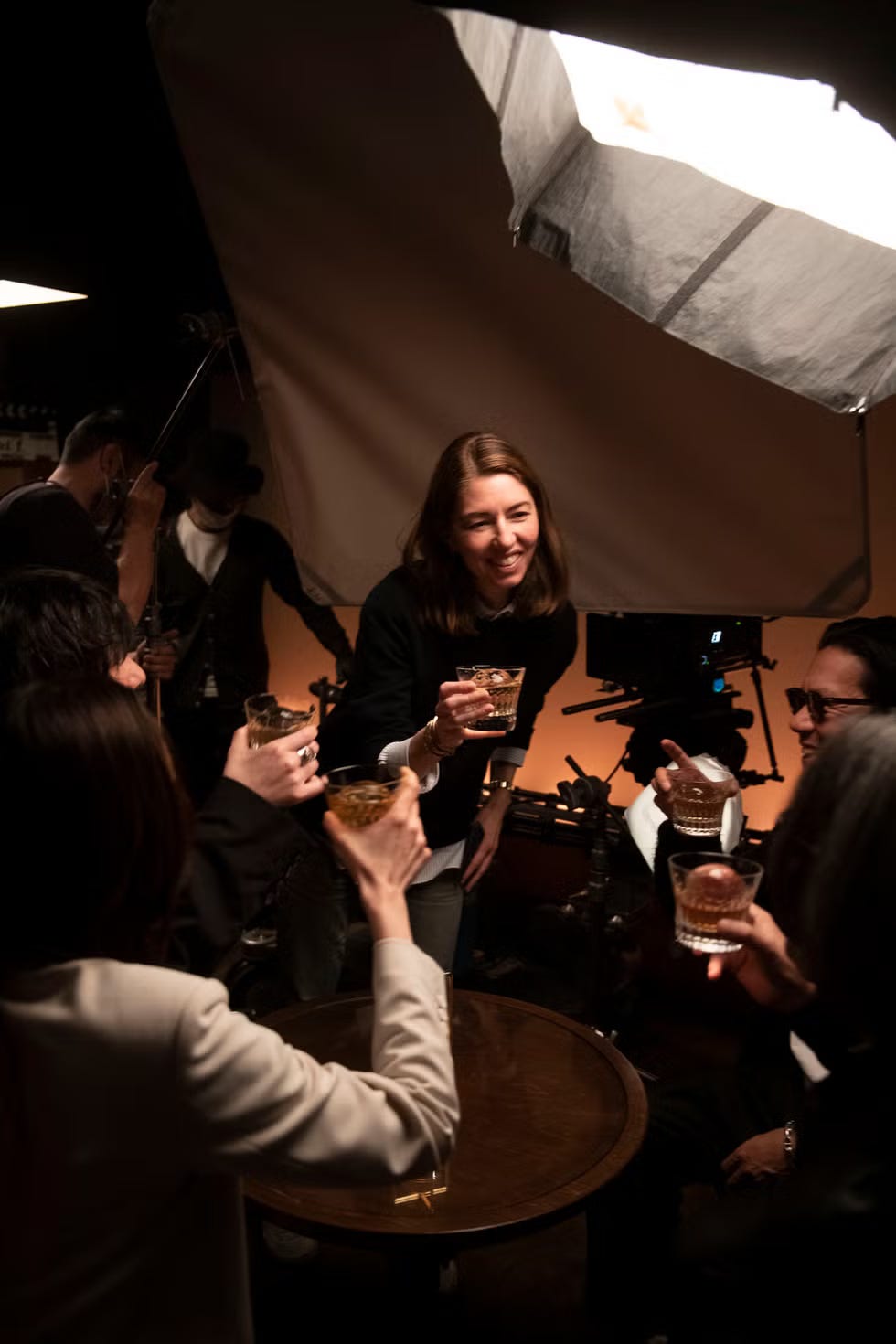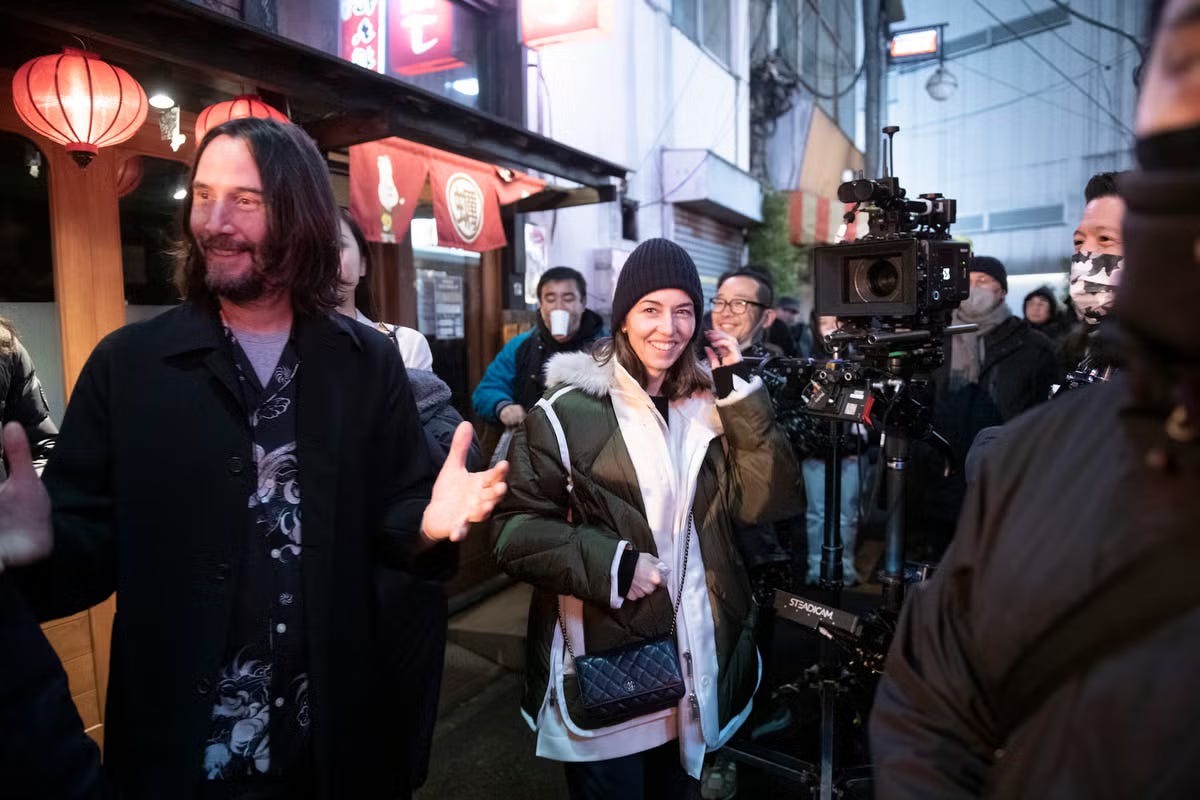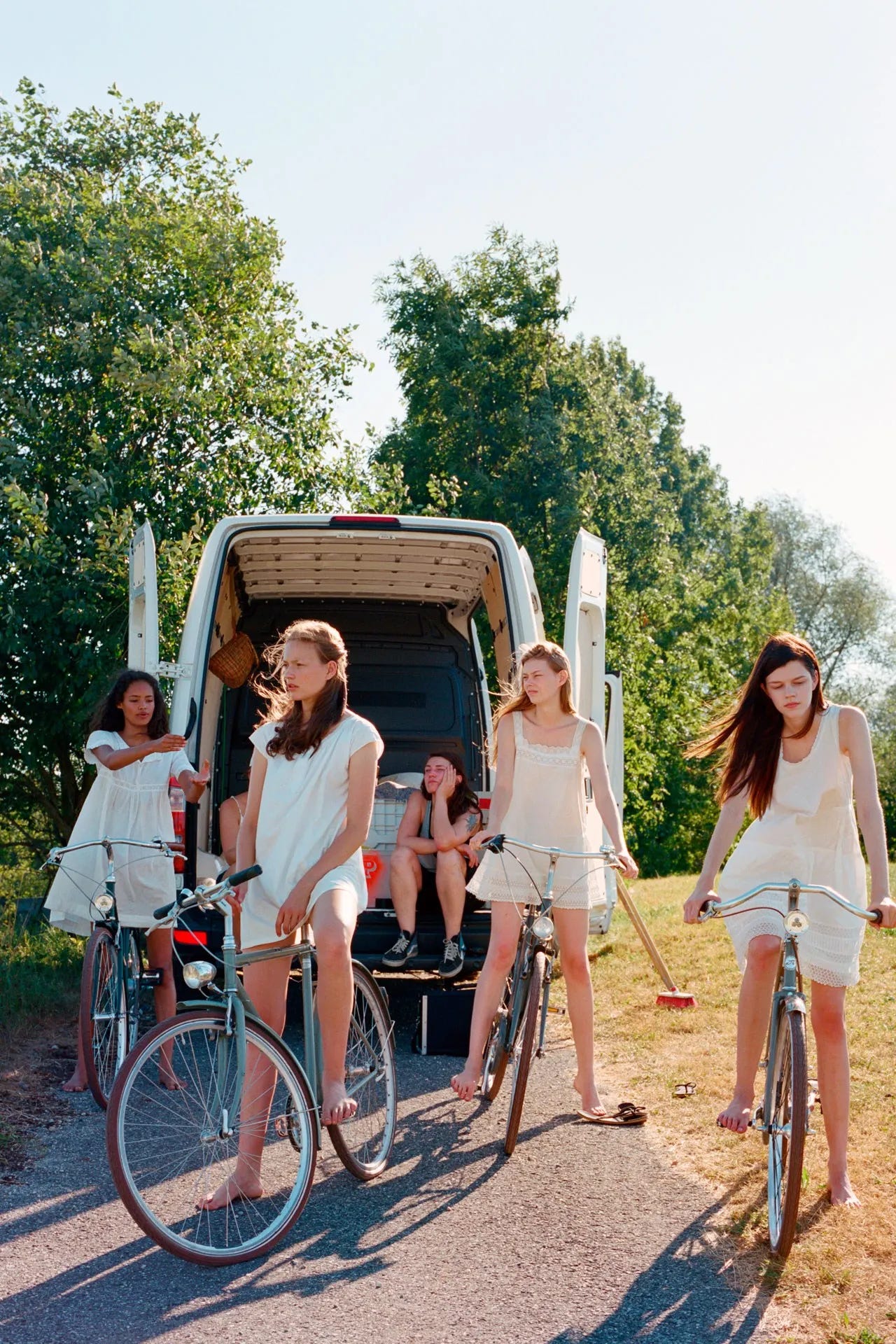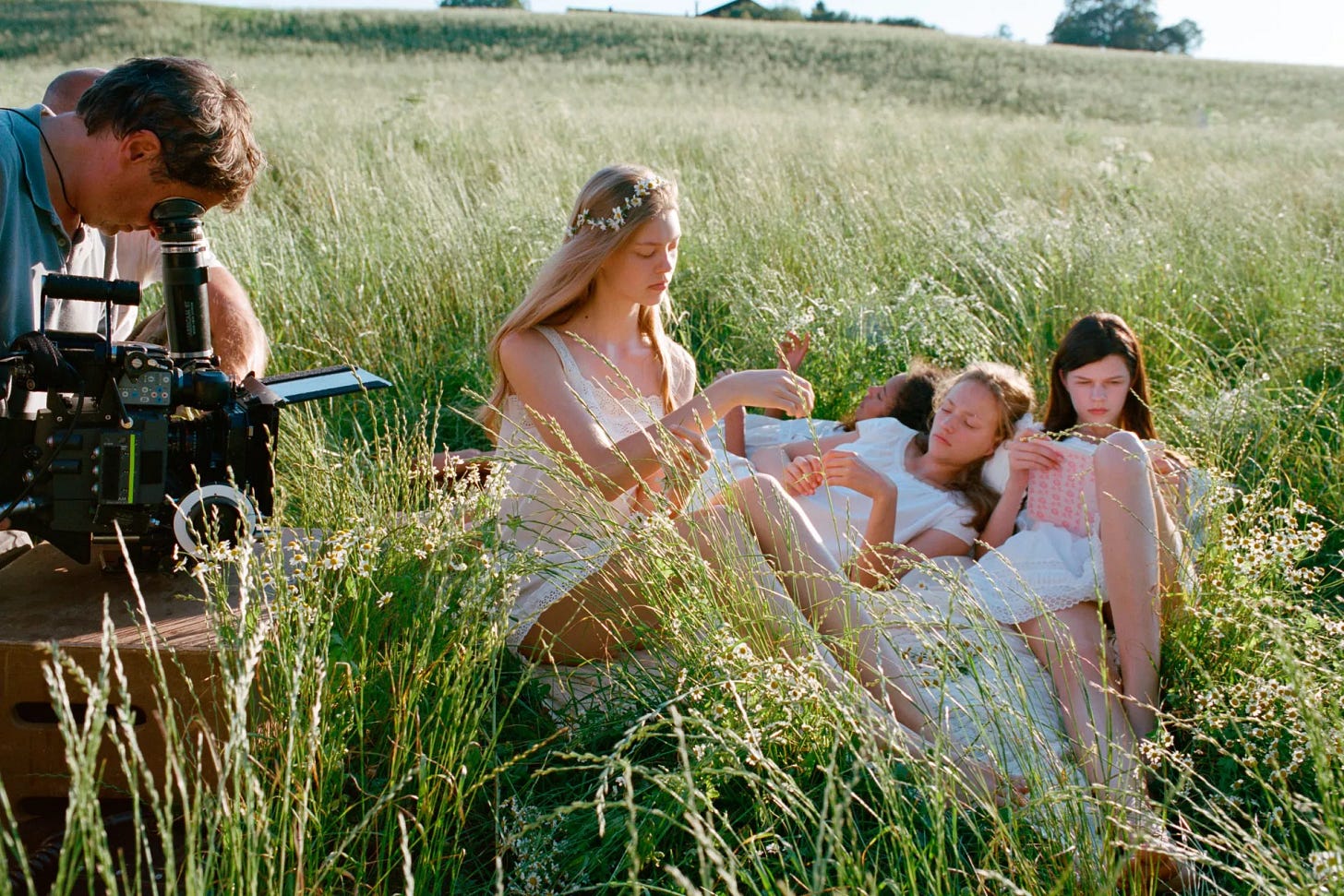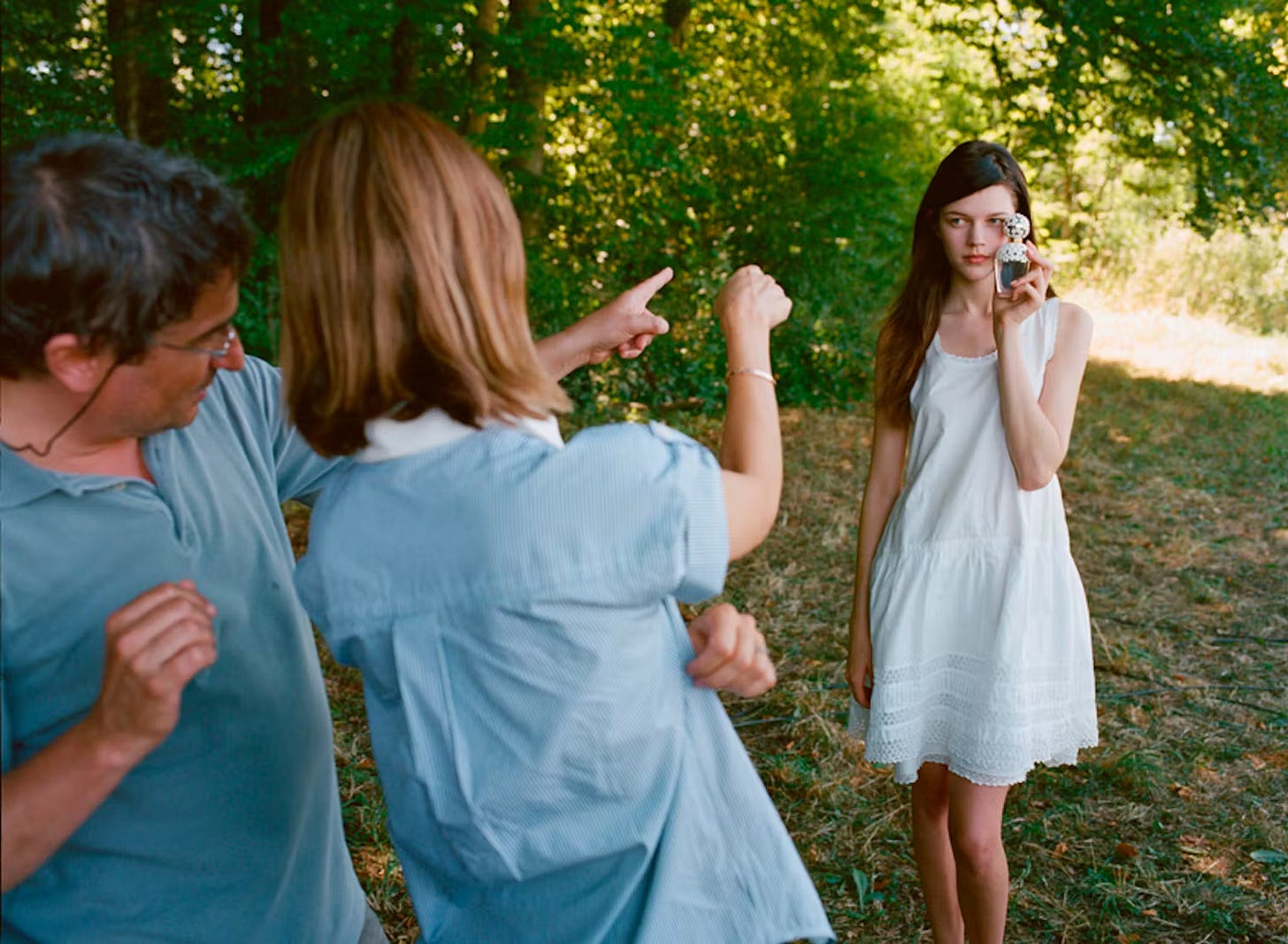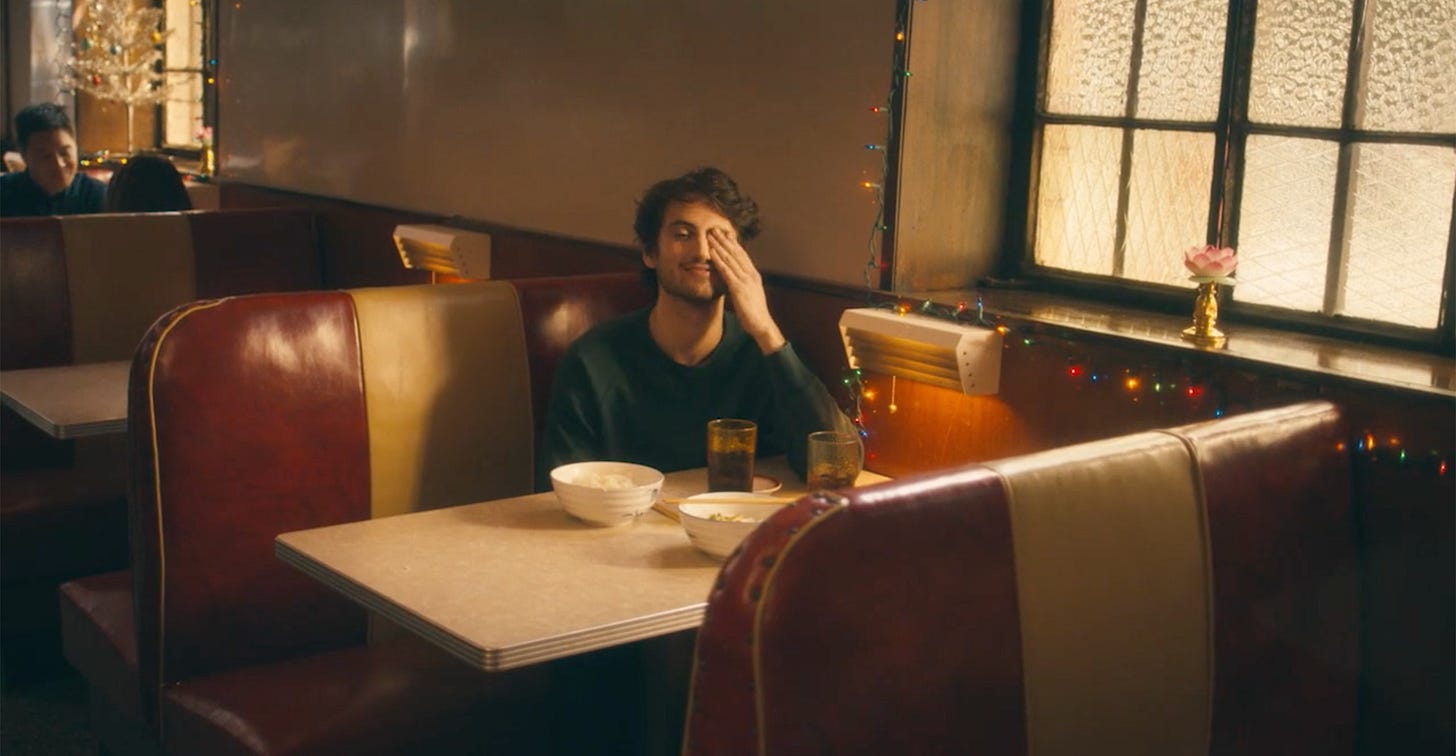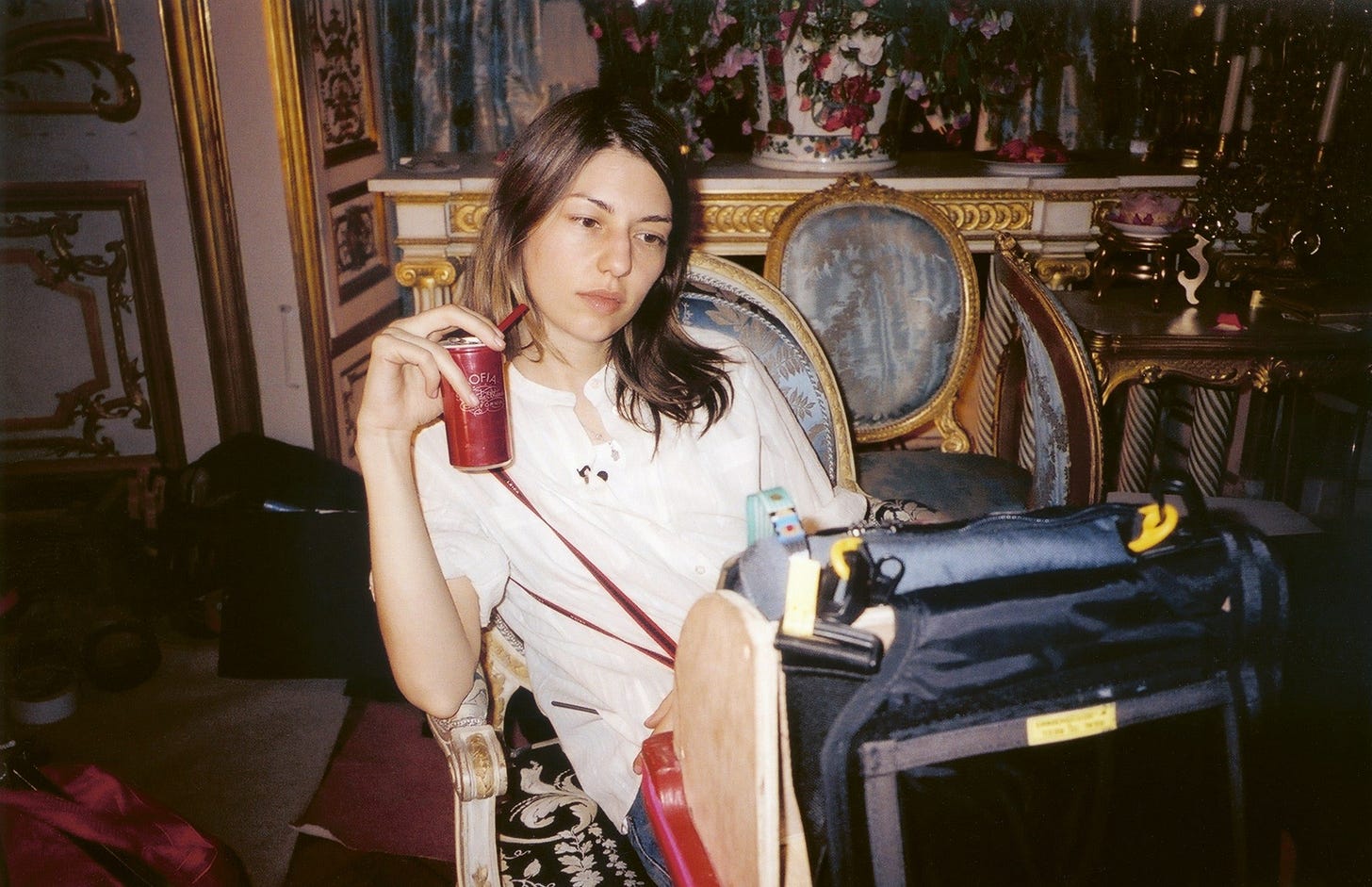At the beginning of this week, I set out to write about a topic that’s currently circulating in the art direction and marketing world (don't worry, I'm not talking about the jaguar rebrand). But as I started, I quickly felt put off. So many Substack writers were already diving into it that I decided to shelve the post for now and revisit it later—once the noise dies down and I’m no longer swimming in everyone else’s opinions. Instead, I turned to my growing list of things I’ve been meaning to explore and decided to go way back. Back to when I was a teenager in art school, dreaming of one day having a career as a creative and soaking up anything even remotely interesting in visual culture. Today, I want to dive into some ads directed by none other than Sofia Coppola.
For context, I’ve always been more of a book-and-music person. Films weren’t really my area—at least not until a few years ago when I met my partner, who’s deeply into cinema. Thanks to him, I started exploring films more intentionally, revisiting old favorites, and making regular trips to the many cinemas in my area (there are three different ones within a 10-minute walk—I feel so lucky!) This has opened up a whole new world of inspiration for me.
One film that’s remained a favorite of mine over the years is Sofia Coppola’s Lost in Translation. So when I recently discovered that she directed the 10th-anniversary ad for Suntory Whisky featuring Keanu Reeves, I was intrigued. It made me want to dig deeper into her work in advertising, especially from earlier in her career. So let’s take a little trip back in time.
“It’s Suntory Time!”
Twenty years after her Oscar-winning second feature Lost in Translation (2003), Sofia Coppola has once again collaborated with Suntory Whisky—this time for their 100-year tribute campaign, released in 2023. In the atmospheric film, Bill Murray famously plays Bob Harris, a washed-up actor visiting Tokyo to star in a commercial for Suntory’s Hibiki 17 whisky, leading to the iconic “Suntory Time!” scene. Now, two decades later, Coppola returns to the brand that played such a pivotal role in her breakout film, bridging her cinematic legacy with a new celebration of Suntory’s history.
Lost in Translation portrayed Tokyo and Japan from a Western perspective, highlighting both cultural stereotypes and the contrasts between East and West. Much of it was inspired by Coppola’s own experiences in Japan and her marriage to fellow filmmaker Spike Jonze. The idea for the film partly stemmed from her childhood memories of her father, Francis Ford Coppola, working on a Suntory commercial with Akira Kurosawa. Sofia blended those early impressions with her own experiences of living in Tokyo in her early twenties, after dropping out of college. At the time, she was navigating a period of uncertainty, working various jobs in fashion and photography while trying to figure out her direction in life. The film captures this sense of quiet crisis—an introspective mix of alienation, admiration, and connection to a foreign culture.
Reflecting on Lost in Translation, Coppola has said that making the film taught her to trust her instincts and focus on what she loves, hoping that others would connect with it too. So, returning to direct an ad for Suntory in 2023 felt like revisiting a deeply personal chapter of her life. For Coppola, this project wasn’t just about celebrating the Suntory brand but also about honoring Japanese culture and its connections to global pop culture—a connection she has helped shape over the years.
The ad begins with Keanu Reeves sipping whisky in what appears to be Tokyo’s famous Golden Gai district. From there, it fades into a dreamlike collage of archival videos and images from Suntory’s history, interspersed with evocative shots of Japan—festivals, fireworks, and celebrations where whisky might play a role. Coppola said that she aimed to weave together the brand’s 100-year story, combining visuals from Suntory’s archives with imagery that reminded her of her own experiences in Japan.
The ad is underscored by “Crimson and Clover” by Tommy James & The Shondells, a song that perfectly complements Coppola’s personal, nostalgic style. Known for her impeccable music taste, she curates the soundtracks for her films and has directed music videos throughout her career. About this particular song choice, she told Harper’s Bazaar: “There’s that energy and the excitement and coolness and fun that encompasses just the energy of being in Tokyo”. Through her distinctive touch, Coppola creates a nostalgic piece that is both a tribute to Suntory’s legacy and a reflection of her own artistic journey
Daisy’s Dreamy Vision
For her longtime friend Marc Jacobs, Sofia Coppola created several fragrance ads with a sunny, light, and airy feel, producing short films for his fragrances Daisy Eau So Fresh and Daisy Dream. Their friendship dates back to the early days of Jacobs' career, when Coppola went behind the scenes after one of his shows. He designed the dress she wore the night she won her first Oscar for Lost in Translation, and she also starred in the campaign for his first fragrance. So, it’s no surprise that Coppola would later make an appearance on the other side of the camera for his fragrance campaigns.
The fragrance was named after Jacobs’ favorite literary character, Daisy Buchanan, from The Great Gatsby, which perfectly fits the indie-sleaze era. It was a time when we were all listening to guitar heavy music and electro pop, wearing flower crowns and spent our free time on tumblr. The mood of the time felt simpler, carefree. I vaguely remember the ads on MTV, which seemed to capture that youthful, wild energy, making me think that this was what it would feel like to be "young".
The ad itself carries the same dreamlike aesthetics seen in Coppola's first film, The Virgin Suicides. It’s set in a muted, nostalgic atmosphere with soft lighting and a color palette that feels intentionally blurred and out of focus at times, adding to the ethereal mood. Moments that should feel ordinary are depicted in ways that feel otherworldly, contributing to the sense of wonder and nostalgia. It also evokes what we now call the female gaze—a perspective that emphasizes women’s experiences, desires, and subjectivity, challenging traditional male-centric portrayals by focusing on female empowerment, complexity, and agency.
The ad depicts a group of girls frolicking through the lush fields of Bavaria—otherworldly and full of wanderlust. The models, with an innocent air, seem as though they've just escaped from boarding school, now leisurely wandering nature together. There are shots of girls lying in fields of daisies, gazing dreamily into the lens. It conveys a sense of youthful freedom—the very essence that the fragrance aims to evoke: memories to be made, a lightness that perfectly mirrors the playful and whimsical feeling of the perfume.
"I really enjoy doing a fragrance campaign because it's about atmosphere and personality. And it's so abstract," Coppola has said.
This abstract nature is characteristic of fragrance campaigns, a genre I’ve never personally worked on but always find fascinating. The challenge of visually capturing something you can’t see results in some truly interesting work. Fragrance ads are often impressionistic, and while some can feel overly abstract, this one communicates a distinct vibe. Of course, it's unmistakably Sofia Coppola, but it also conjures the feeling of something floral, light, playful, and just the right amount of sweet. Making it easy to imagine what the scent might smell like.
Family Christmas for GAP
In 2014, Sofia Coppola directed another memorable ad, this time for the GAP Holiday campaign, presented in the form of short films. The ad gives off the feeling of what a Christmas film about family dynamics might look like—highlighting the different ways age groups experience the holiday season. While it’s less in her signature dreamy style and more aligned with the typical look of a traditional TV commercial, the choices Coppola makes still reflect the craftsmanship of a master storyteller, telling much of the narrative through the subtle looks and interactions between characters.
Teaming up with Wieden + Kennedy, Coppola set out to capture the essence of holiday moments—everything from the overwhelming energy of a family holiday party to the subtle differences and unspoken tensions under the mistletoe. The ad also touches on the things we keep hidden from our loved ones, yet still love them unconditionally. The campaign reaches its heartwarming peak with a young boy performing for his family, giving his all in a lip-syncing performance—a moment many of us recall from childhood, when we sang into a hairbrush, standing on the coffee table, imagining we were the stars of our own arena tour.
At the time, GAP’s tagline was “Dress normal,” but in this ad, the brand shows that family is anything but normal. Coppola’s cheerful take on the holiday season and her witty approach to the tagline has aged surprisingly well, even a decade after the campaign first premiered.
As the style icon she is, Coppola seamlessly blends family-friendly fashion with rich storytelling about the quirky, heartfelt realities of the holiday season. The result is a perfect mix of fashion and narrative, embodying the spirit of Christmas through the lens of familial love and imperfection.
And that’s a wrap for this week’s posts! There’s so much more to explore when it comes to Sofia Coppola’s work, and writing this made me think of even more topics I’d love to research. As always, I’d love to hear from you—my DMs are open for any questions, thoughts, or suggestions. I’m already working on some of your post ideas and can’t wait to share them soon!
Cheers,
Kimberly




